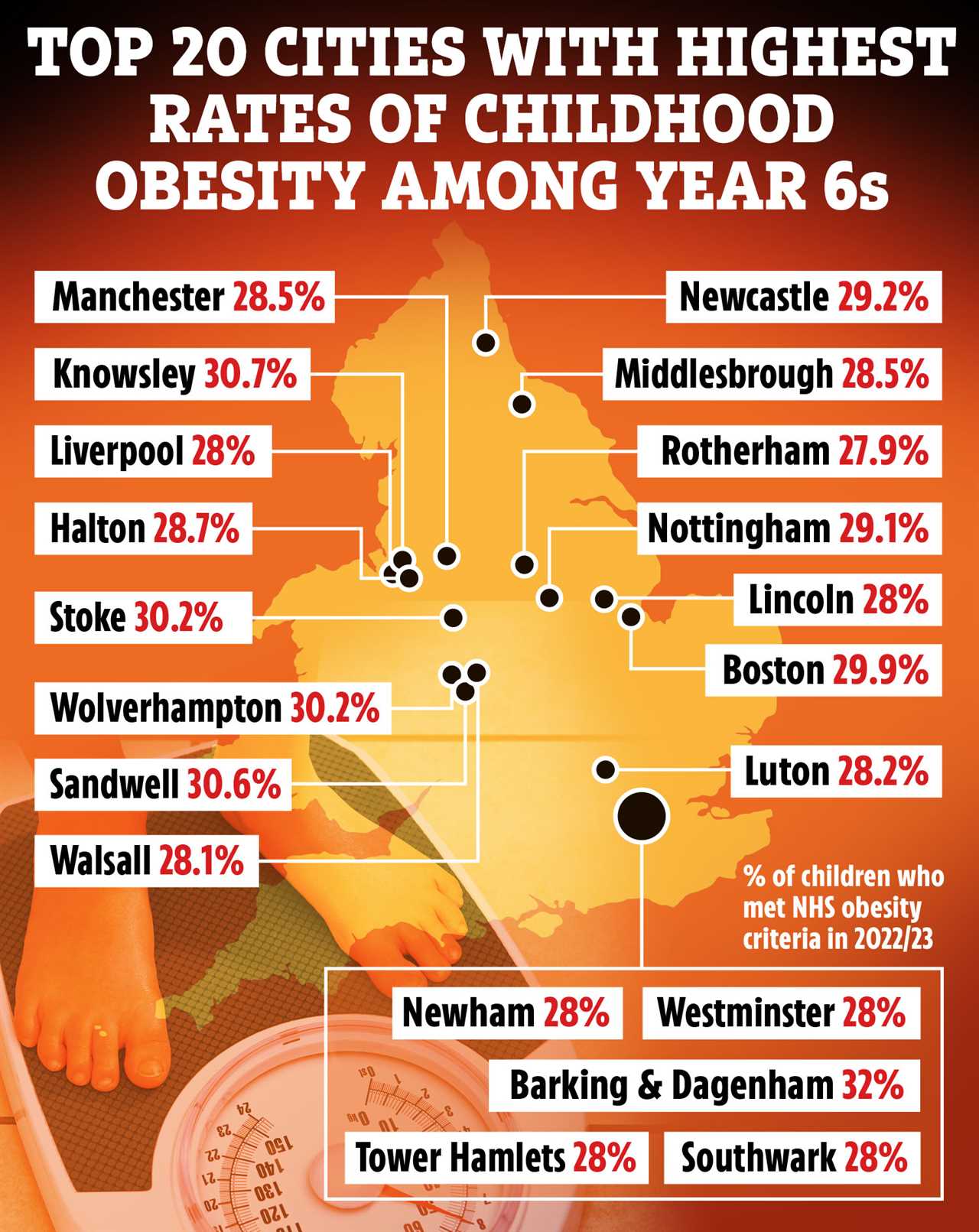
Pandemic Impact: 1 in 4 Children in England Now Obese
According to researchers, nearly 25% of children in Year 6 in England are now obese as a result of the pandemic. This is an increase from the pre-pandemic rate of 21%. When considering both obesity and overweight figures, 40.9% of Year 6 children from deprived areas are an unhealthy weight, as per the latest NHS data. This is up from 35.2% before the Covid-19 pandemic.
Lockdown Weight Gain: The Culprit Behind Rising Obesity Rates
During the lockdowns, when schools were closed and outdoor activities were limited, children gained weight at an alarming rate. The restricted access to physical activities contributed to this concerning trend. In fact, the study reveals that an astonishing 32% of Year 6 pupils in Barking and Dagenham, an east London borough, are classified as obese or severely obese.
Regional Disparities: Areas with the Highest Obesity Rates
Several areas in England have seen a significant increase in childhood obesity rates. The worst affected areas include Barking and Dagenham (32%), Knowsley (30.7%), Sandwell (30.6%), Stoke-on-Trent (30.2%), and Wolverhampton (30.2%). In contrast, obesity rates among children heading to senior school are as low as 10.4% in Guildford, Surrey, and 13.2% in Richmond upon Thames.
Long-term Consequences: Impact on Health and the Economy
Researchers warn that up to 85% of obese children are likely to remain obese into adulthood, increasing their risk of developing type 2 diabetes, cancer, and heart disease. The study estimates that children's weight gain during the pandemic could cost the UK economy nearly £9 billion. Additionally, the NHS could face a financial burden of £800 million as a consequence of this escalating problem.
A Call for Action: Tackling Childhood Obesity
Professor Keith Godfrey, one of the study's authors, emphasizes the importance of addressing childhood obesity as a national priority. The Obesity Health Alliance stresses that reducing childhood obesity is crucial for tackling societal inequalities. Public health experts suggest that targeting under-fives with new policies could be an effective way to combat the growing problem of childhood obesity.
Regional Breakdown: Areas with the Highest Rates of Childhood Obesity
According to the study, the areas with the highest rates of childhood obesity include Boston (29.9%), Newham (29.7%), Newcastle upon Tyne (29.2%), Manchester (29.1%), and Nottingham (29.1%). On the other hand, Walsall, Lincoln, Liverpool, and Rotherham have the lowest rates among the 20 worst-scoring areas.
Government Response: Addressing Obesity Across All Socio-economic Groups
The Department for Health and Social Care acknowledges the need to tackle obesity across all socio-economic groups. They have implemented measures such as introducing labeling on pre-packed foods and restricting the placement of high-fat, high-sugar, and high-salt foods in supermarkets.
Are Your Children at a Healthy Weight?
If you are concerned about your child's weight or growth, you can use the NHS BMI calculator to determine whether they are of a healthy weight. Childhood obesity is defined as having a BMI greater than or equal to the 95th centile, while being overweight is having a BMI centile greater than or equal to the 85th centile. Reach out to a GP or school nurse for further guidance.






